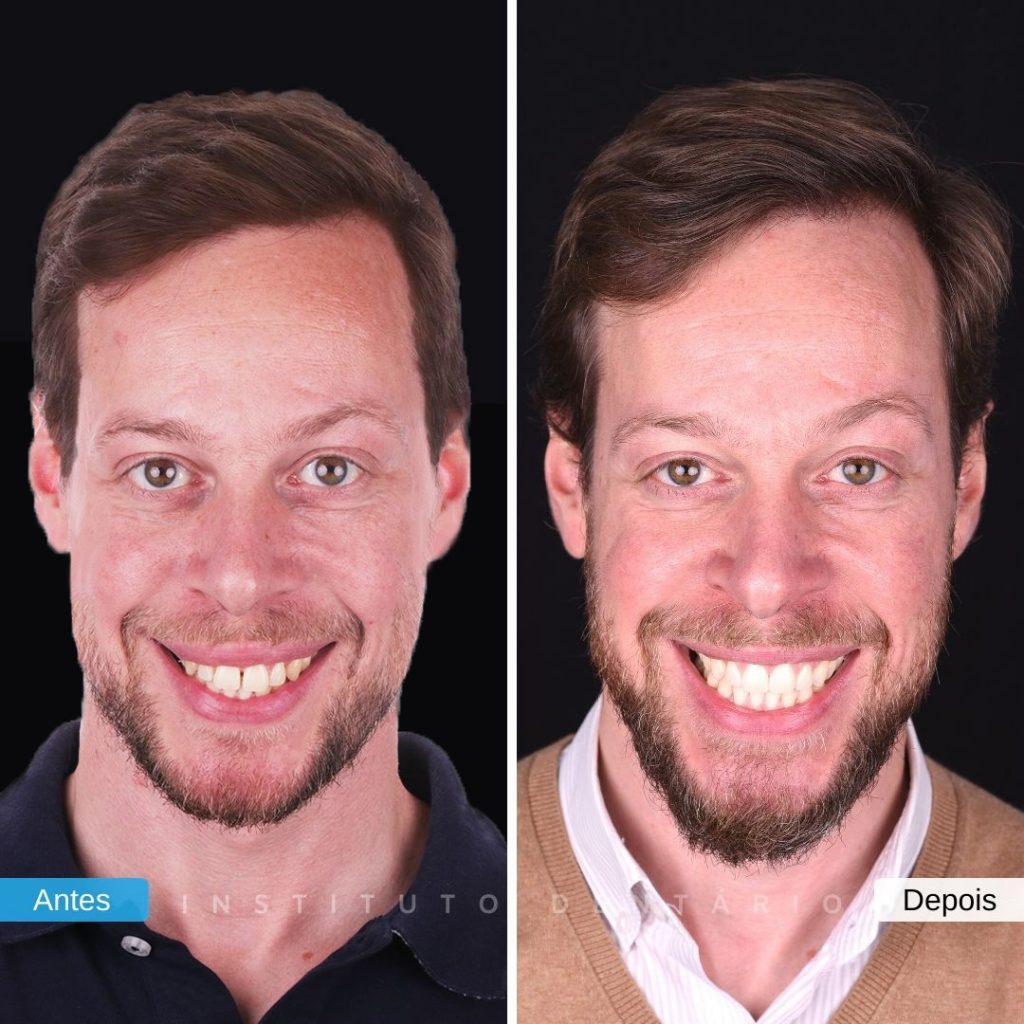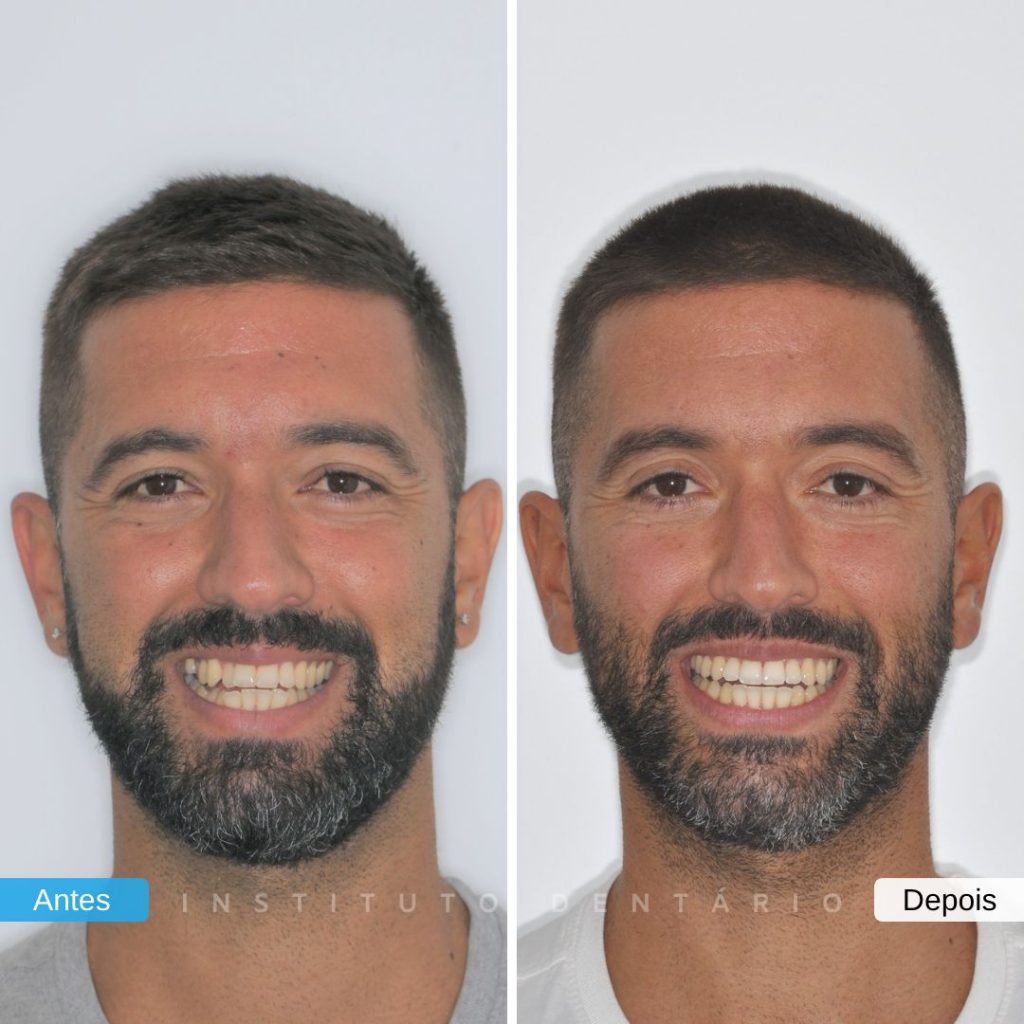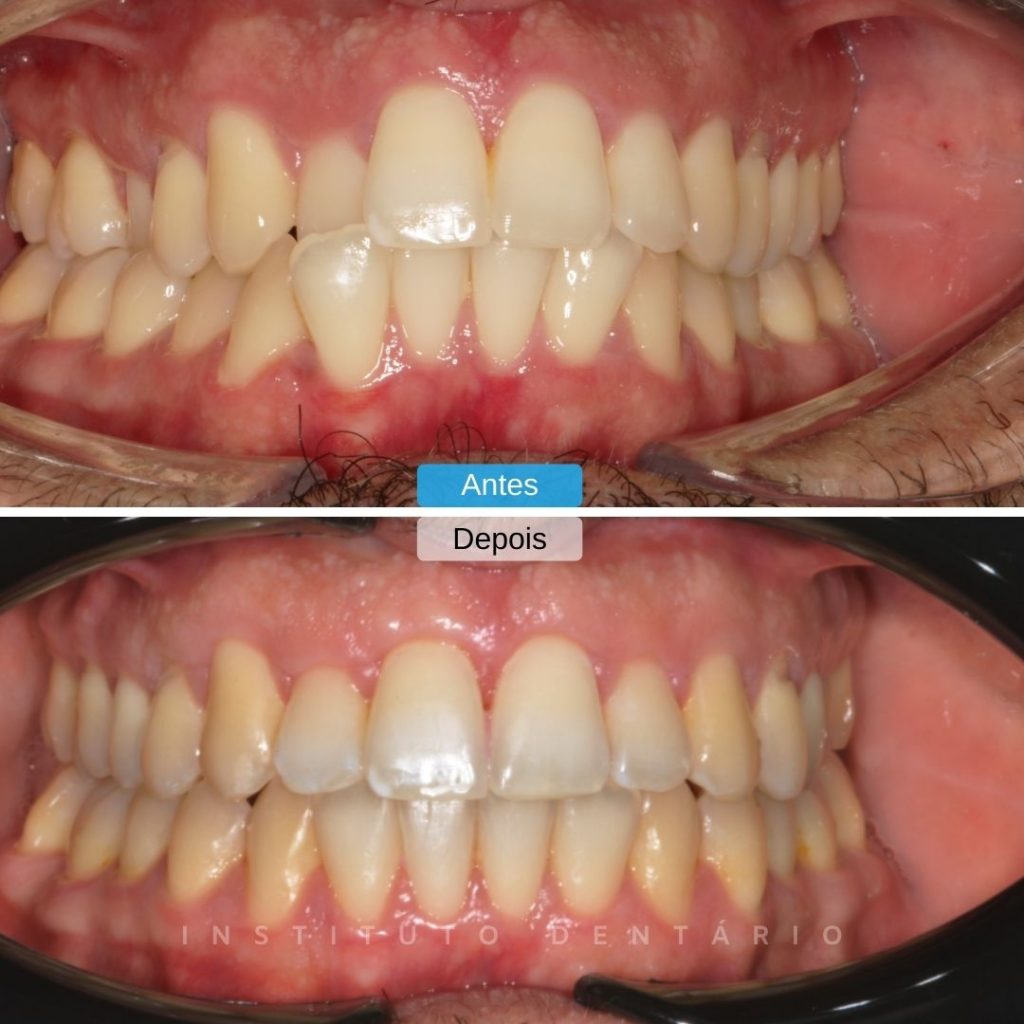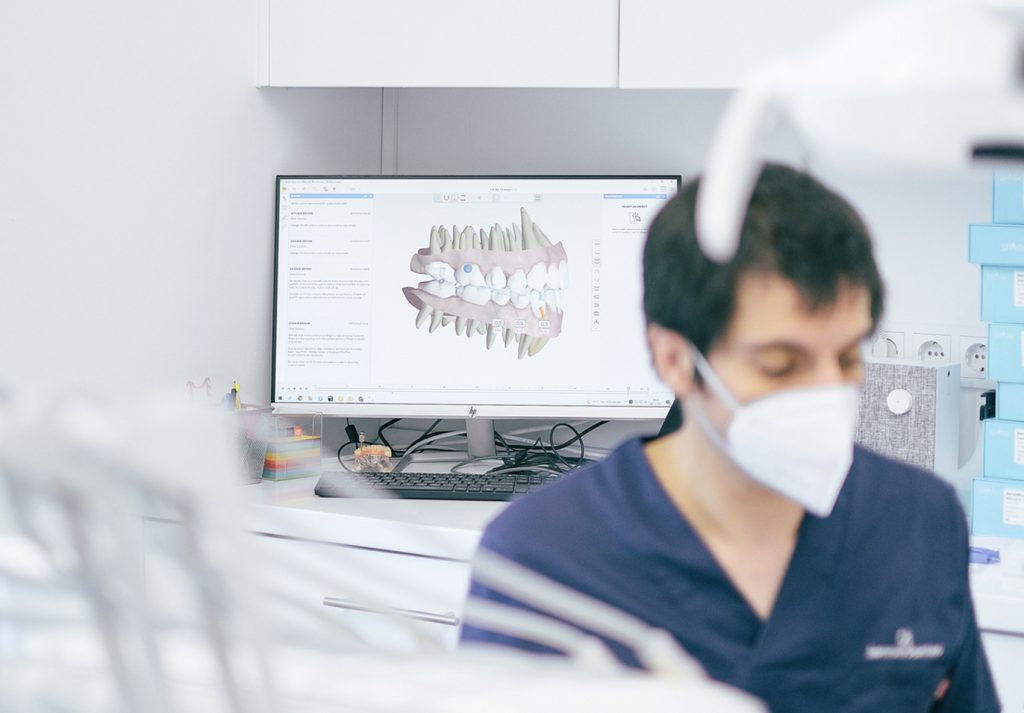
What is Orthodontics?
Orthodontics is the speciality concerned with the diagnosis, prevention and treatment of malpositioned teeth and jaws.
Orthodontic treatment aims to correct aesthetics and phonetics, improve dental occlusion and joint problems, promote a better distribution of the forces exerted on the teeth, protecting them from trauma and improving chewing function.
Poorly positioned teeth or crowding can lead to caries lesions and periodontal problems (in the tissues that support the teeth) due to difficulties in proper hygiene, with consequent tooth loss or destruction.
What is Orthodontics?
Orthodontics is the speciality concerned with the diagnosis, prevention and treatment of malpositioned teeth and jaws.
Orthodontic treatment aims to correct aesthetics and phonetics, improve dental occlusion and joint problems, promote a better distribution of the forces exerted on the teeth, protecting them from trauma and improving chewing function.
Poorly positioned teeth or crowding can lead to caries lesions and periodontal problems (in the tissues that support the teeth) due to difficulties in proper hygiene, with consequent tooth loss or destruction.

This dental misalignment also puts additional stress on the muscles responsible for chewing, which can cause headaches, damage to the temporomandibular joint and pain in the neck, shoulders and back.
Through a correct diagnosis and rigorous assessment, the orthodontist will define the treatment plan and which appliance is best suited to improve dental occlusion and promote an aesthetic and harmonious smile, combined with all the functionality of a dentition, in terms of chewing ability, phonetics and proper oral hygiene care.
To correct dental malocclusion, different types of braces are used – fixed and/or removable – as well as invisible aligners, through which a gentle force is applied to the teeth, enabling them to move into the desired position.

This dental misalignment also puts additional stress on the muscles responsible for chewing, which can cause headaches, damage to the temporomandibular joint and pain in the neck, shoulders and back.
Through a correct diagnosis and rigorous assessment, the orthodontist will define the treatment plan and which appliance is best suited to improve dental occlusion and promote an aesthetic and harmonious smile, combined with all the functionality of a dentition, in terms of chewing ability, phonetics and proper oral hygiene care.
To correct dental malocclusion, different types of braces are used – fixed and/or removable – as well as invisible aligners, through which a gentle force is applied to the teeth, enabling them to move into the desired position.
The main Orthodontic problems
Crowding: Lack of space for teeth to fit in the dental arch, leading to overlapping teeth or poor positioning
Diastemas: Spaces between teeth, which can result from missing teeth or inadequate tooth size
Crossbite: When the teeth of the lower jaw overlap the teeth of the upper jaw.
Open bite: Space between the biting surfaces of the front teeth when the back teeth come together
Midline deviation: When the centre of the upper arch and the centre of the lower arch are not aligned.
Retrognathism: When the teeth of the upper jaw are protruding or when the lower jaw is set back in relation to the face.
Prognathism: When the teeth of the lower jaw or the chin are in front of the teeth of the upper jaw.
The main Orthodontic problems
Crowding: Lack of space for teeth to fit in the dental arch, leading to overlapping teeth or poor positioning
Diastemas: Spaces between teeth, which can result from missing teeth or inadequate tooth size
Crossbite: When the teeth of the lower jaw overlap the teeth of the upper jaw.
Open bite: Space between the biting surfaces of the front teeth when the back teeth come together
Midline deviation: When the centre of the upper arch and the centre of the lower arch are not aligned.
Retrognathism: When the teeth of the upper jaw are protruding or when the lower jaw is set back in relation to the face.
Prognathism: When the teeth of the lower jaw or the chin are in front of the teeth of the upper jaw.
Types of dental braces
Invisible Aligners
These braces are considered to be the latest innovation and one of the biggest trends in orthodontics. These transparent dental aligners are customised for each patient using digital planning software and apply gentle pressure to the teeth, moving them into the desired position.
It’s a discreet, comfortable, virtually painless and very easy-to-use treatment, making it a popular alternative to metal braces.
The aligners are replaced periodically by the patient themselves and, in addition to the aesthetic benefits, this type of orthodontic appliance has the advantage of being removable, allowing the patient to eat and carry out their oral hygiene, as well as that of the appliance itself, more effectively and comfortably.
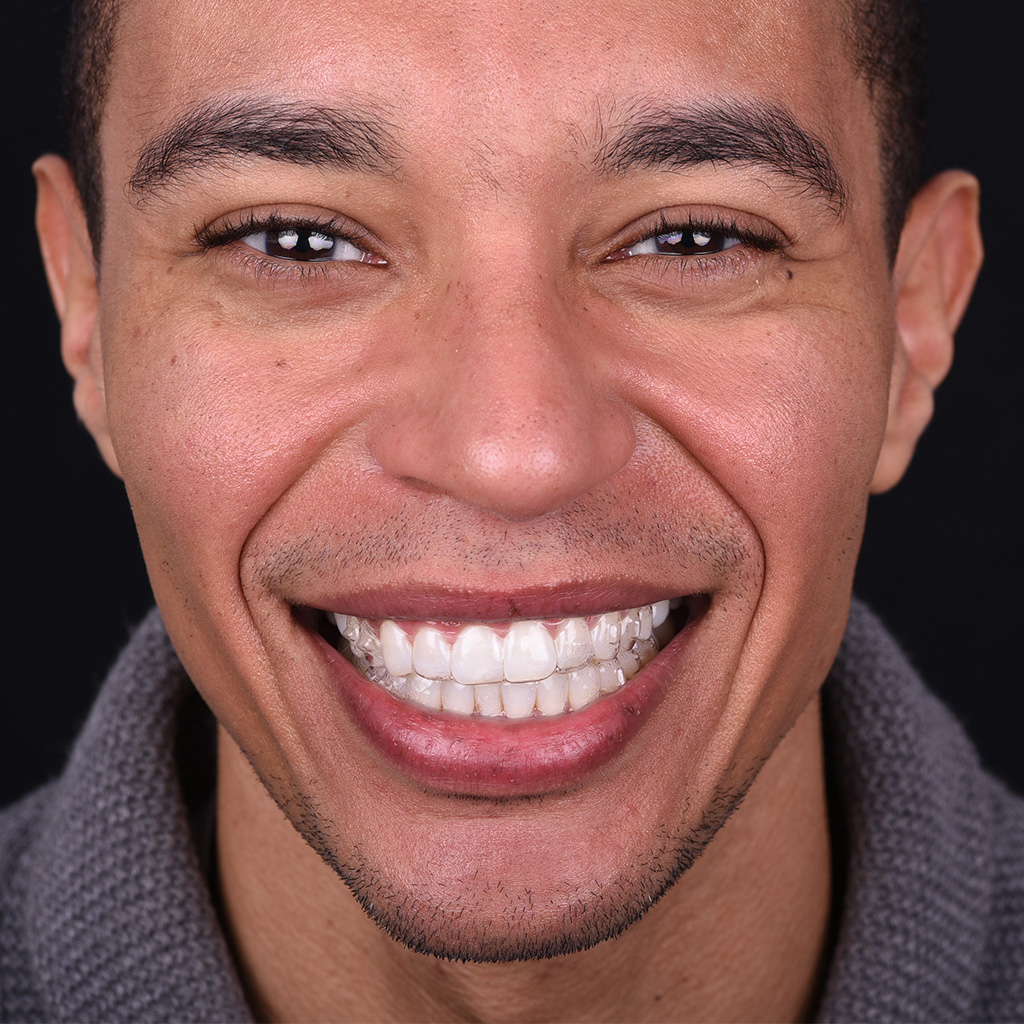
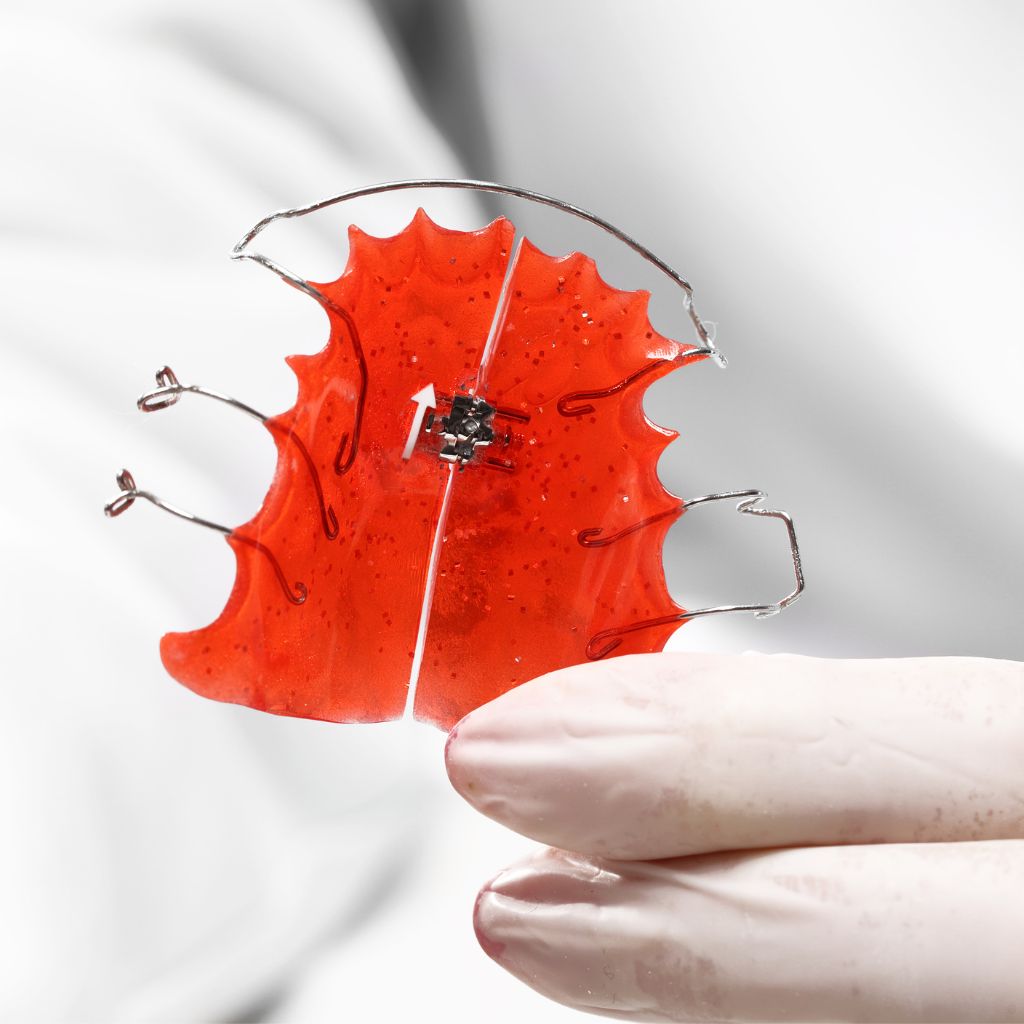
Removable Braces
They are the type of appliance most commonly used in children and young people, taking advantage of the potential for growth at this age.
They are mainly used to ensure that milk teeth are correctly replaced by permanent teeth, with the necessary spaces and proper bone and tooth development.
Metal or aesthetic Fixed Braces
They are the most common and traditional type of orthodontic appliance, in which the orthodontist uses brakets, either metal or ceramic (more transparent), connected to an orthodontic wire through elastic bands or metal ligatures, which exert gentle forces on the teeth in order to progressively and continuously change their position, correcting and realigning them.
The success of treatment with this type of appliance depends on attending check-ups (usually every month) and maintaining proper oral hygiene.
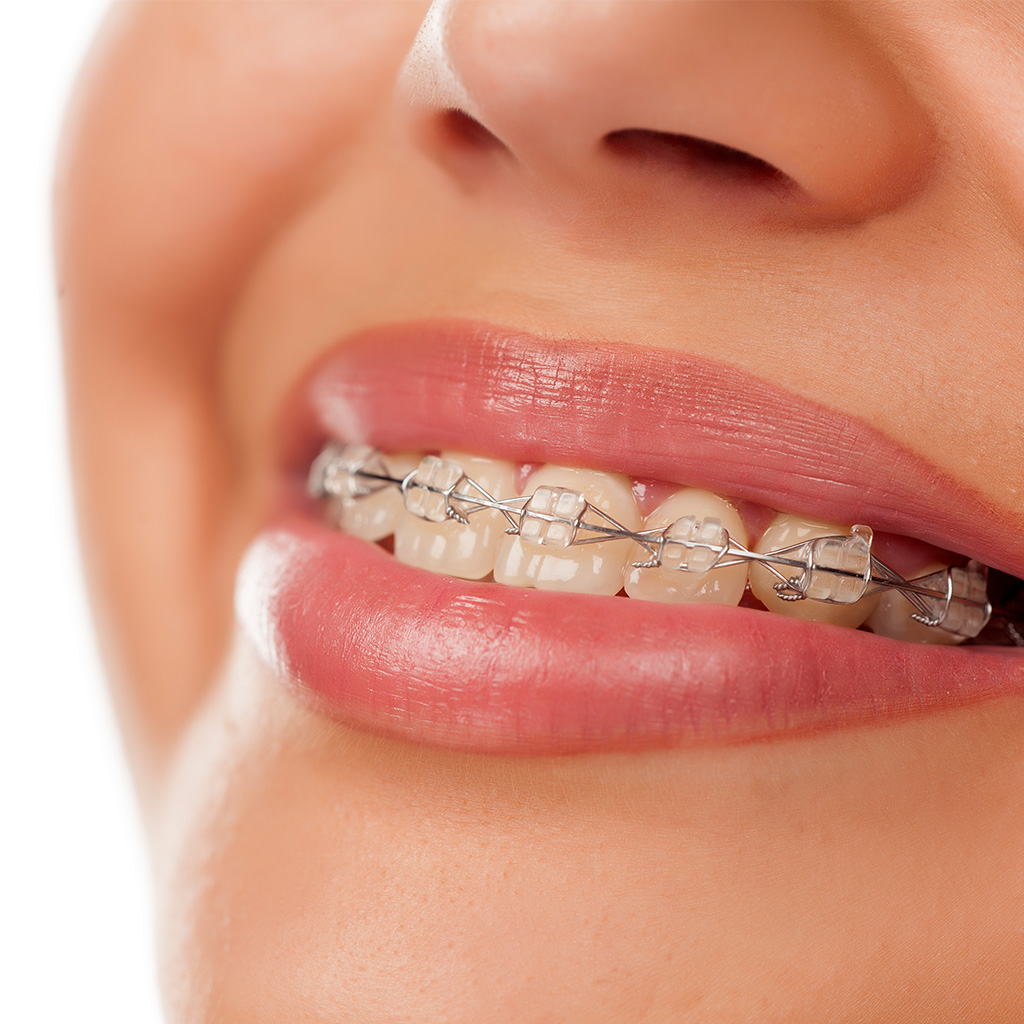
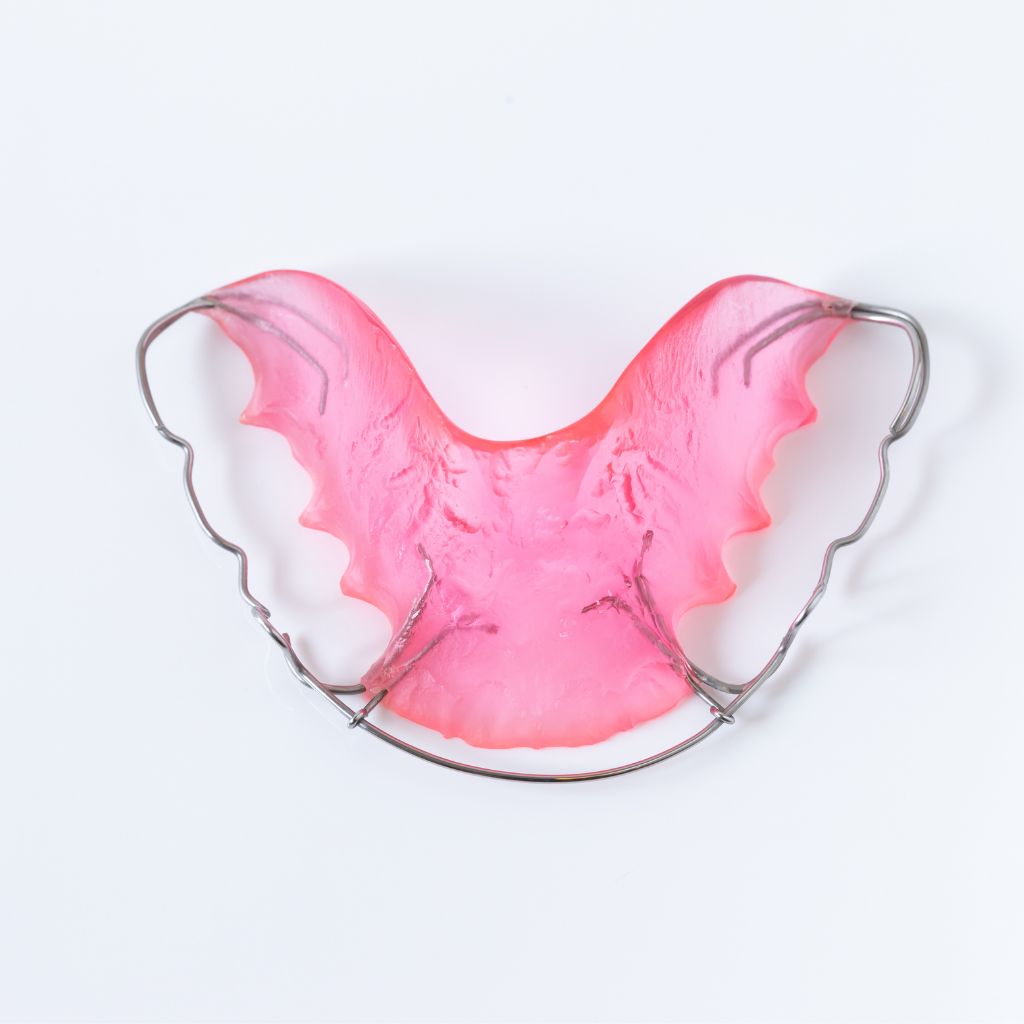
Retention Braces
Braces are placed at the end of orthodontic treatment, regardless of the type of dental appliance used for correction.
They stabilise and maintain the result over time. They can be fixed (glued to the inside of the teeth) and/or removable, depending on the needs of the case.
Types of dental braces
Metal or aesthetic Fixed Braces
They are the most common and traditional type of orthodontic appliance, in which the orthodontist uses brakets, either metal or ceramic (more transparent), connected to an orthodontic wire through elastic bands or metal ligatures, which exert gentle forces on the teeth in order to progressively and continuously change their position, correcting and realigning them.
The success of treatment with this type of appliance depends on attending check-ups (usually every month) and maintaining proper oral hygiene.

Removable Braces
They are the type of appliance most commonly used in children and young people, taking advantage of the potential for growth at this age.
They are mainly used to ensure that milk teeth are correctly replaced by permanent teeth, with the necessary spaces and proper bone and tooth development.

Invisible Aligners
These braces are considered to be the latest innovation and one of the biggest trends in orthodontics. These transparent dental aligners are customised for each patient using digital planning software and apply gentle pressure to the teeth, moving them into the desired position.
It’s a discreet, comfortable, virtually painless and very easy-to-use treatment, making it a popular alternative to metal braces.
The aligners are replaced periodically by the patient themselves and, in addition to the aesthetic benefits, this type of orthodontic appliance has the advantage of being removable, allowing the patient to eat and carry out their oral hygiene, as well as that of the appliance itself, more effectively and comfortably.

Retention Braces
Braces are placed at the end of orthodontic treatment, regardless of the type of dental appliance used for correction.
They stabilise and maintain the result over time. They can be fixed (glued to the inside of the teeth) and/or removable, depending on the needs of the case.

Faq
The installation of orthodontic braces does not cause pain, however, it is possible that in the early days after its application and each time the braces are activated, the patient will feel some discomfort.
This discomfort is natural and will disappear as the body adapts to the presence of the appliance.
The duration of orthodontic treatment varies from case to case, depending on the type of existing dentofacial disharmony and the complexity of the treatment to be carried out. On average, we can say that each treatment lasts around 18 to 24 months.
Correcting orthodontic problems brings several benefits to the patient, among which the following stand out:
- Improved aesthetic appearance, by aligning the teeth and producing a harmonious smile;
- improved ease of oral hygiene care;
- increased chewing efficiency due to a better relationship between the teeth;
- improved phonation and breathing;
- prevention of damage to the temporomandibular joint.
CONTACT
Schedule yout Appointment
Leave your contact details and we’ll book your appointment within 24 hours.

